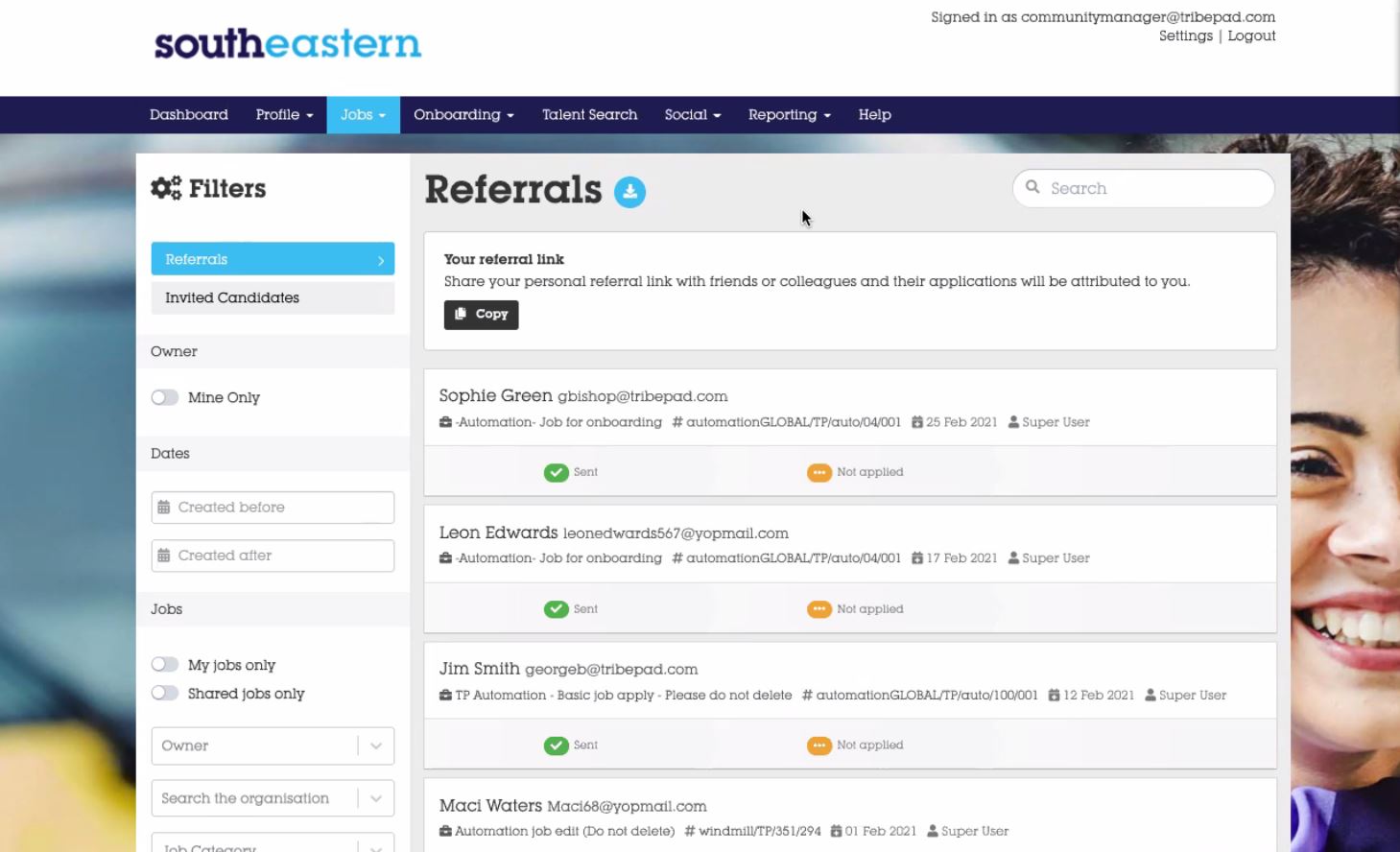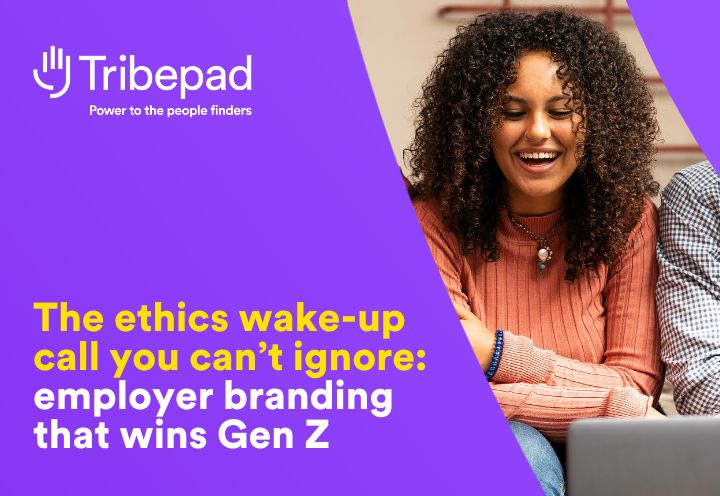An employee referral program is a mission-critical tool in your recruitment arsenal – if it’s done right.
A great employee referral program delivers the highest quality hires, the shortest time-to-fill and the lowest cost-per-hire.
But on the flipside, a poor referrals program is ineffective – tumbleweed. Or worse, actively counterproductive – inspiring endless poor-quality referrals that snarl up your time.
Here are five proven best practices to make sure your program falls into the first camp. By building a referrals channel that’s the strategic heart of your recruitment.
1 – Drive culture change
A truly effective employee referral program isn’t a just nice perk for the now-and-then when employees know someone who might fit. Or a last resort for hard-to-fill roles. Or a spray-and-pray tactic where employees refer everyone on their Twitter feed to try and earn a bonus.
Dr. John Sullivan talks about moving towards an employee referrals program that generates more than 50% of all your hires. And sees 30%+ of your top performers participating regularly.
To get there, there’s a serious mindset shift where every employee accepts proactive responsibility “to be a 24/7 talent scout” in the name of working alongside the best people. (And empowering them to do so, as we’ll show you throughout this article).
2 – Empower your employees to be champions
Think about why referrals are such a great source of hire. Harvard Business Review say that’s all about the extra information the referrer shares, both with the candidate about the job and with you about the candidate.
The referrer is the go-between; a mediator helping both sides get a better understanding of fit. That means the referrer is the gatekeeper of success – so a successful employee referrals program focuses on empowering your employees to be better referrers.
That means:
- Having a strong, consistent employer brand, to ensure candidates are hearing the message you hope they’re hearing.
- Equipping your employees as recruiters – giving them the tools (like email templates, critical first interview Qs, company info) to excel.
- Briefing your employees with exactly who you’re looking for. Not only telling them about opportunities but sharing your strategic priorities, like improving diversity (see #4 )
A best-in-class employee referral program is a force multiplier for your recruitment team, turning every employee into a potential recruiter.
3 – Offer great incentives
You’d like to think employees will make referrals just for that warm fuzzy feeling of helping a friend find an awesome new job. But in practice, your referrals program’s probably so far from their mind, they’ll rarely remember. Even if they know the perfect person.
Incentives are a great way to keep your program front-of-mind.
(Remember though, incentives are just that – incentives. An added bonus, an extra perk. Only 11% of employees make referrals for the bonus – so incentives shouldn’t be the sole motivator. And if they are, your employee referrals program won’t fulfil its potential.)
Incentives typically fall into three categories:
- Financial. A bonus is the most common incentive we see. Amounts typically range from £1000 to £4000, depending on the role. Sometimes much more.
- Time-off. Extra paid time-off can feel more valuable than a cash reward and typically costs you less. Plus it emphasises a culture of work/life balance.
- Outside-the-box. A weekend away. Gig tickets. An all-expenses-paid boozy brunch. A flying lesson. Champagne every Friday all year. Thoughtful, meaningful things.
Instead of prescribing incentives you hope employees like, try asking them to suggest incentives. You could offer a ‘menu’ so employees can choose what they’d love. Regularly rotating and inviting employee input will keep things fresh and engagement high.
4 – Take a strategic approach – not a generic one
Not all referrals are created equal. Taking a generic approach designed to maximise the number of referrals without also considering quality is creating a rod for your own back.
According to Dr. John Sullivan, best-practice is prioritising referrals three ways:
- Prioritise jobs with the highest impact (like jobs where product innovation happens, or revenue-generating roles)
- Prioritise candidates with the highest impact (like employees from your key competitors, or individuals from diverse backgrounds)
(On the diversity note, employee referrals can contribute to a lack of diversity and maintain the glass ceiling for women. If your organisation is less diverse than you’d like, relying on your employee network risks perpetuating the problem.
Or it could help solve it, if you use your referrals program to actively seek, prioritise and incentivise referrals from diverse backgrounds. Read more about how recruiters can deliver on diversity.)
- Prioritise referrals from the highest-impact employees (like employees with past referral success and referrals from top performing employees).
We’ll also add another to the list, based on Harvard Business Review’s finding of strong correlation between quality of referrals and strength of relationship:
- Prioritise referrals from employees with a strong connection to the person they’re referring (like past co-workers or long friendships)
HBR found the highest quality referrals were former co-workers who employees had known for a year or more.
These ‘strong connection’ referrals were 3x more likely to generate a quality hire than the weakest type of referral, where referrers were connected only through social media. (And these weakest referrals were actually no more likely to generate a quality hire than non-referred candidates.)
The point is, be wary of a blanket ‘referrals are great’ attitude. Too many low-quality referrals snarl up your recruiters’ time just as much as high application volume does.
5 – Make it easy!!
To drive culture change and put employee referrals at the centre of your recruitment strategy, your program must be easy. That is, easy for employees to participate in – and easy for recruiters to manage in a consistent way.

That’s where Tribepad’s referrals centre comes in.
- For employees…
Using Tribepad, your employees can easily refer potential candidates using the ‘Refer’ button on every job. Going further though, Tribepad also assigns each of your employees a unique referrer link to share however they want (one-to-one, or embed in their email signature, social profiles, etc).

Anyone clicking can explore all your open opportunities – and if they apply, it’s automatically tracked against the right employee. This encourages employees to refer people who’ll be a good culture fit, as well as referring for specific opportunities.
The referrals centre encourages employees to take proactive ownership over their own referrals, with a dashboard that shows everyone they’ve referred and their candidate status.
- For recruiters…
From recruiters’ perspective, the referrals centre isn’t just a way to track referrals against the relevant employee. It’s a hub showing every referred candidate – with powerful filters, to enable searching by the likes of business unit, region, employee owner, candidate status or date.
Recruiters can also click straight through and review referred candidate’s profiles straight from the referrals centre. That means you could easily prioritise referrals over other sources of hire, getting straight to the candidates who’re likely best.
The referrals centre also shows on recruiters’ central Tribepad dashboard so it can be visually front-and-centre of everything your team does. Add robust historical tracking and you can see your program’s success over time and identify opportunities to improve.
Employee referrals can be hugely powerful, especially as recruitment continues getting harder.
To realise the channel’s full potential though, you need an approach (and the technology to support it) that treats referrals as the heart of your recruitment strategy, not an expendable limb. Follow these five best-practices and that’s what you’ll be well on your way to achieving.
What stage is your own employee referrals program at? What bottlenecks are you facing? We’d always love to hear about your experiences.
The Tribepad talent platform helps recruiters build powerfully straightforward recruitment experiences that live-up to your vision. View our guide to learn more.



